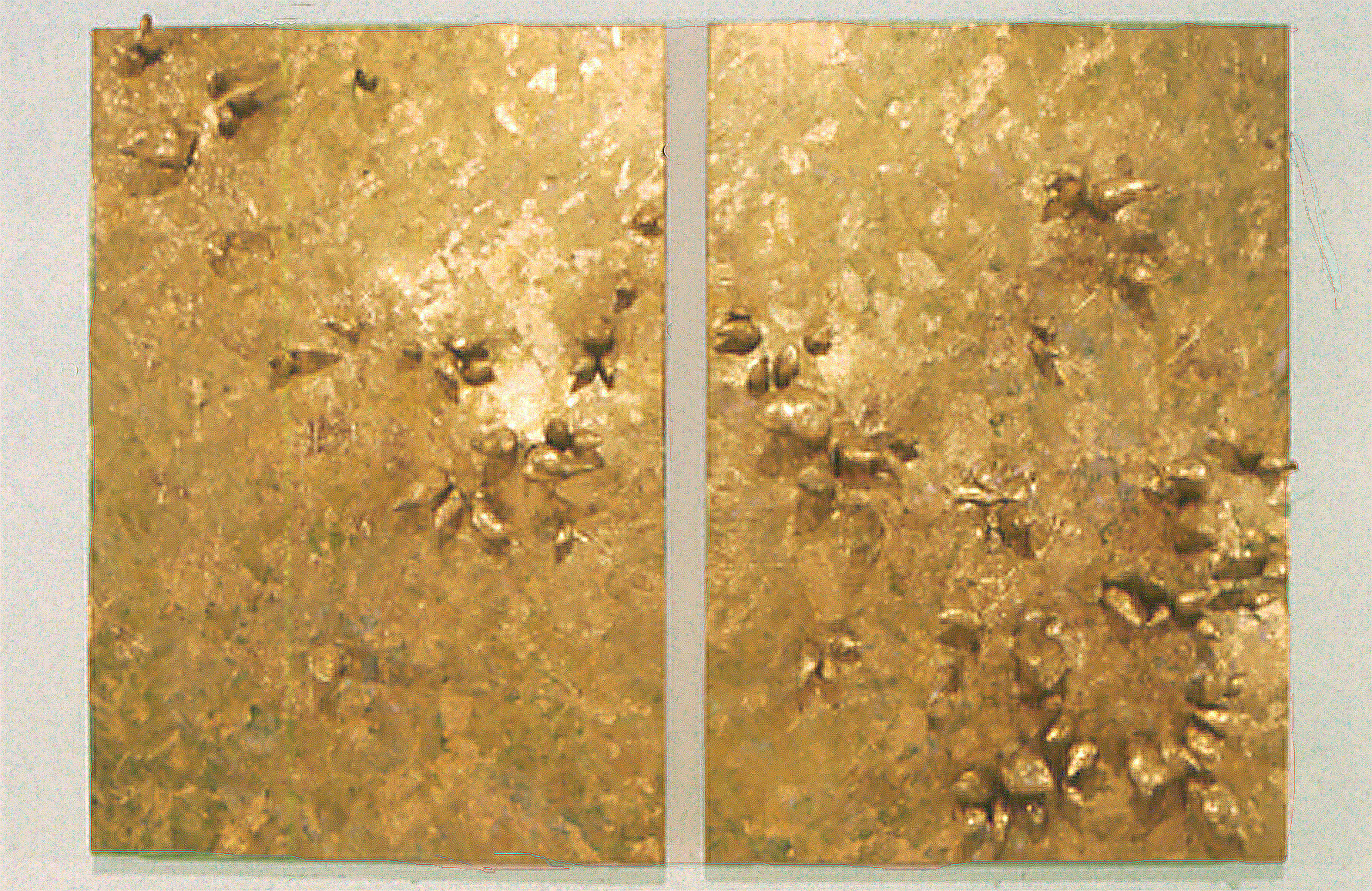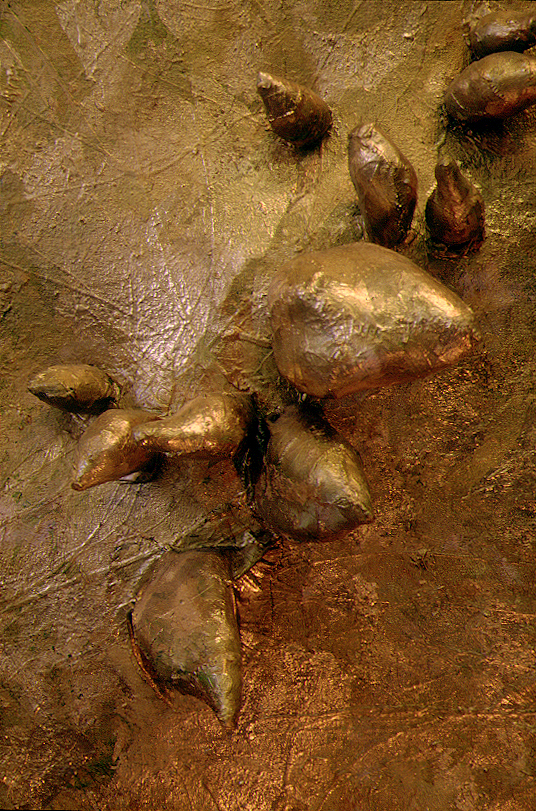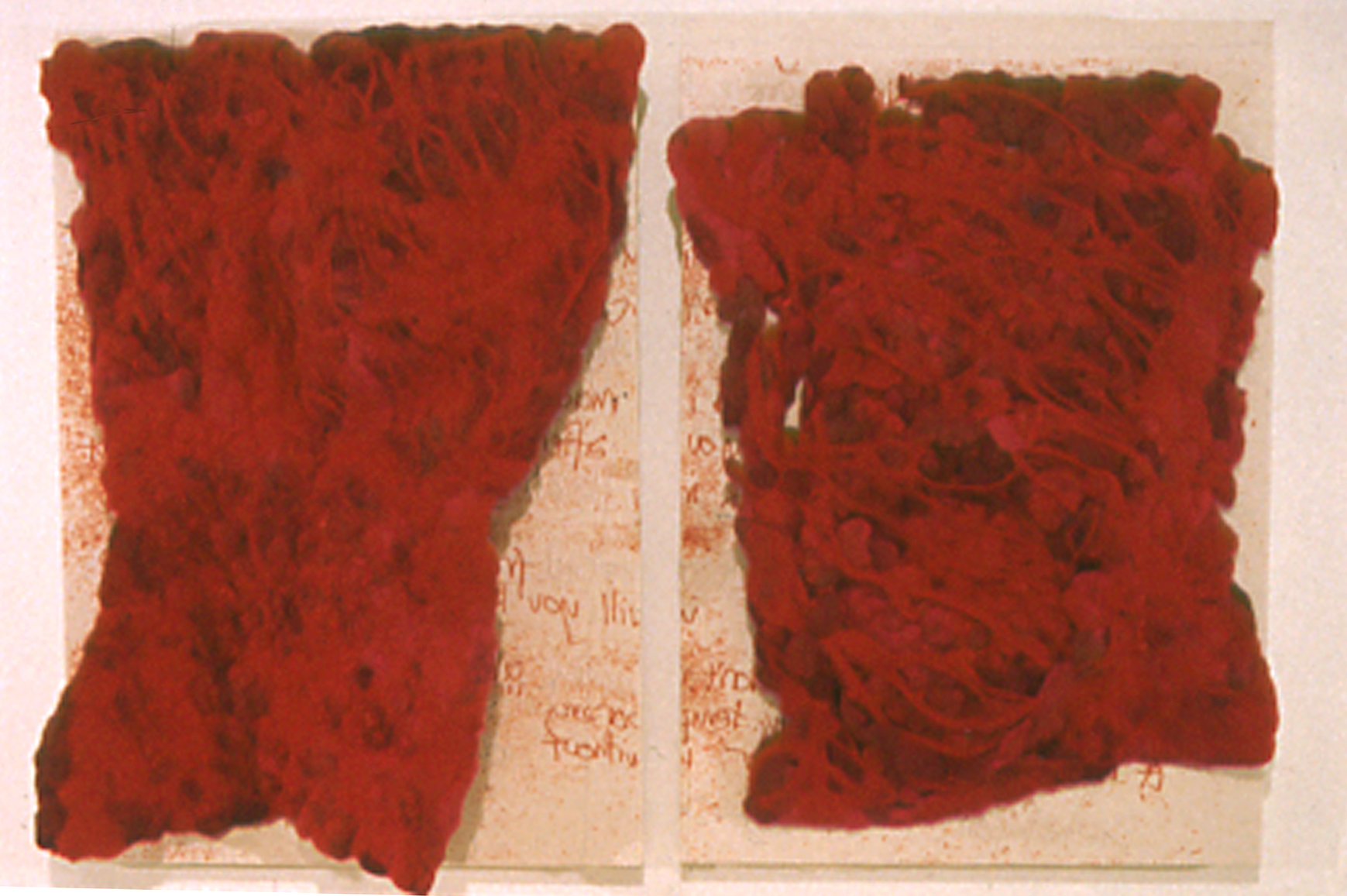The Embodied Series (1998) explores connections between the human body and the landscape using the metaphor of injury and healing. After all, both person and place can be wounded, and both have extraordinary capacities to regenerate. Within limits, the land can repair itself; the natural world can also help restore a wounded human. A maimed person can treat her own injuries; so can she also help repair the wounds of the earth.
Highly tactile as well as visual, the Embodied works are “constructed paintings”: five diptychs in mixed media, incorporating sculptural techniques such as carving and mouldmaking, as well as fibre art devices of embroidery, felting, and unraveling. As a wound does, these pieces breach boundaries — between painting and sculpture, between art and craft, between a canvas’s self-contained surface and the physical world of the viewer. Each of the five works in the series alludes to a specific body sense. After all, it’s through our physical senses that we engage with the world; when we’re injured, our senses’ ability to connect is impaired.
In Embodied (Look), glittering gold-leafed proboscises sprout from the canvas surface and scuttle across the work’s two panels. The textile construction of the proboscises can best be seen in detail.


From a distance, Embodied (Touch) is a splash of red — an irregular, handfelted wool ‘blanket’ that hangs from the frame’s top edge, reminding us of the sick bed, of a distant, downy terrain. Seen close up, the work’s textile and embroidery details lure us with their laboured tactility.

Embodied (Listen) also rewards touch: hanging from hundreds of threads of unraveled linen are countless bells, baubles, and beads that move against each other in a choir of tiny voices. This piece is built in tones of black, evoking nighttime when our hearing seems most acute. Slashing across the two panels is a horizontal gash that reveals a shining gold leaf promise of healing. This promise is partially kept by black strings the span the gap and suture the wound.
Embodied (Taste) and Embodied (Scent) also combine tactile and visual devices to explore the impact of injury on our sensory engagement with the world.
The Embodied works came to me after a long period not making visual work. I’d been wounded myself, my dominant right wrist badly injured in a car accident. The injury came just as I was about to embark on the thesis work for my MFA. As I recovered from bad fractures and surgery, I knew that I had a body of work to make in order to complete my degree — but more, that I had a body of work to make to reclaim my artistic practice.
Curiously, the idea for the Embodied works came full-blown one December morning. I knew exactly what the five pieces would be like. But I didn’t have the slightest idea how to create most of them, nor was I sure I was physically up to the task of the obsessive, repetitive hand work that each Embodied seemed to require. Technical and physical means: those were my challenges.
Obviously, I found a way. Other artists were very generous with their expertise. I did lots of research and experimentation. And I knew that I was going to make the Embodied works, whatever they required in terms of skill development or physical recovery from my injuries. In a way, they were my occupational therapy. And I’m delighted that now I am not hampered by residues of my own injury.
Embodied (Touch) was exhibited at the Common Thread: a biennial juried textile exhibition, September 17 – October 12, 1998, at the Sheridan College School of Craft and Design Gallery, Oakville, Canada.
Embodied (Look) and Embodied (Listen) were exhibited at Gallery One in Toronto in 2004.